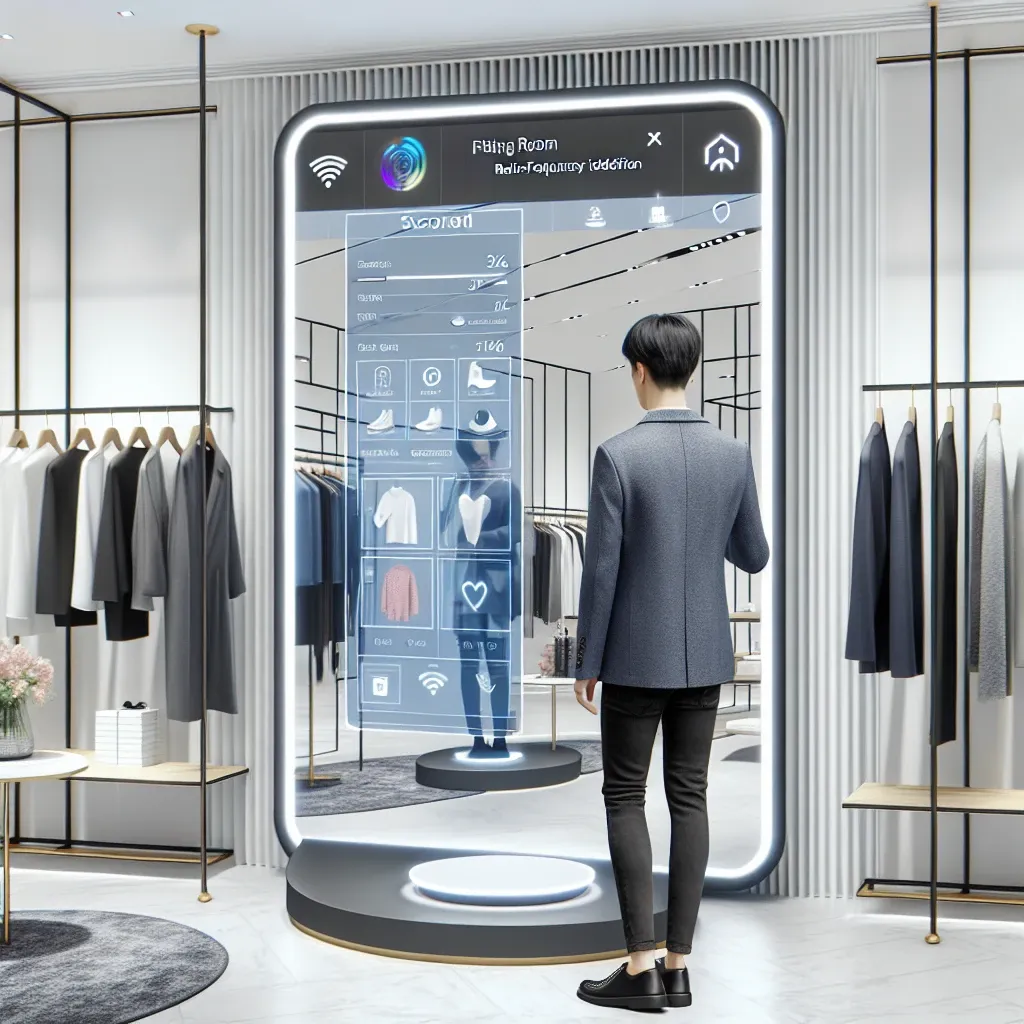Introduction
As the retail landscape continues to evolve, major retailers are increasingly turning to technology to enhance the shopping experience. One of the latest innovations making waves in the industry is the implementation of RFID-enabled smart fitting rooms. These cutting-edge solutions are designed to streamline the fitting room process, improve inventory management, and ultimately provide customers with a smoother shopping experience.
Understanding RFID Technology
Radio Frequency Identification (RFID) is a technology that uses electromagnetic fields to automatically identify and track tags attached to objects. In retail, RFID tags can be attached to clothing items, allowing retailers to monitor inventory in real-time, track customer engagement, and reduce loss prevention issues. By integrating RFID technology into fitting rooms, retailers can transform a traditionally mundane experience into an interactive and efficient process.
The Rise of Smart Fitting Rooms
The concept of smart fitting rooms is not entirely new, but its adoption has gained momentum in recent years. Major retailers, including Walmart and Nordstrom, are among those testing RFID-enabled fitting rooms to leverage the benefits of this technology.
How RFID-Enabled Fitting Rooms Work
In an RFID-enabled fitting room, customers can scan clothing items upon entering the room. The RFID system recognizes the items and displays relevant information, such as sizes available, colors, and even styling suggestions on an interactive mirror or screen. This not only saves time for customers but also enhances their shopping experience by providing personalized recommendations.
Key Features of RFID-Enabled Fitting Rooms
- Inventory Management: Retailers can keep track of which items are in fitting rooms, reducing the chances of misplaced merchandise.
- Personalized Experience: Customers receive tailored suggestions based on their selections, enhancing engagement.
- Feedback Mechanism: Retailers can gather data on customer preferences and behaviors within the fitting room environment.
- Seamless Checkout: RFID technology can facilitate a quicker checkout process by allowing customers to purchase items directly from the fitting room.
The Benefits of Implementing RFID Technology
Integrating RFID technology into fitting rooms offers numerous advantages for retailers and customers alike. Here are some key benefits:
1. Enhanced Customer Experience
By providing instant access to product information and personalized recommendations, RFID-enabled smart fitting rooms significantly enhance the customer experience. Shoppers no longer need to leave the fitting room to find assistance or additional sizes, making the process more enjoyable and efficient.
2. Improved Inventory Accuracy
RFID technology allows for real-time tracking of inventory levels, enabling retailers to maintain accurate stock levels and reduce instances of out-of-stock items. This ensures that customers can find the products they want without frustration.
3. Reduced Loss Prevention
With RFID technology, retailers can minimize theft and loss through better tracking of items in fitting rooms and on the sales floor. The ability to monitor which items are being tried on and where they are located helps combat shrinkage.
4. Data-Driven Insights
RFID-enabled fitting rooms provide retailers with valuable data on customer behaviors and preferences. This information can be analyzed to inform inventory decisions, marketing strategies, and store layouts, ultimately driving sales and improving customer satisfaction.
Challenges and Considerations
While the benefits of RFID-enabled smart fitting rooms are significant, retailers must also consider potential challenges:
1. Implementation Costs
The initial investment for RFID technology, including tagging items and installing the necessary infrastructure, can be substantial. Retailers must weigh these costs against the anticipated benefits and ROI.
2. Customer Privacy Concerns
As with any technology that collects data, there are concerns about customer privacy. Retailers must ensure that they handle customer data responsibly and transparently, building trust with their clientele.
3. Training and Adaptation
Employees may require training to effectively utilize new systems and provide customers with the best possible service. Retailers must invest in staff training to ensure successful adoption of the technology.
Case Studies: Retailers Leading the Charge
Walmart’s Pilot Program
Walmart has been at the forefront of testing RFID technology in its stores, including smart fitting rooms. The pilot program aims to enhance inventory accuracy and streamline the shopping experience. Initial results have shown improvements in stock management and customer satisfaction.
Nordstrom’s Interactive Fitting Rooms
Nordstrom has also embraced RFID-enabled fitting rooms, offering customers an interactive experience with high-tech mirrors that suggest items based on their selections. The initiative has been well-received, reinforcing Nordstrom’s commitment to providing exceptional customer service.
The Future of Retail: Predictions and Trends
As retailers continue to explore the capabilities of RFID technology, several trends are likely to emerge:
1. Broader Adoption Across the Industry
More retailers are expected to adopt RFID-enabled smart fitting rooms as the technology becomes more affordable and accessible. This will lead to a more standardized approach to fitting room experiences across the industry.
2. Integration with Mobile Technology
The integration of RFID with mobile apps is likely to become commonplace, allowing customers to access information and services directly from their smartphones while in the fitting room.
3. Enhanced Personalization
As data collection improves, retailers will be better equipped to offer hyper-personalized experiences, tailoring recommendations to individual customer preferences.
Conclusion
RFID-enabled smart fitting rooms represent a significant advancement in the retail sector. By merging technology with customer experience, major retailers are setting a new standard for how shoppers interact with products. As this trend continues to grow, the retail landscape will undoubtedly become more efficient, personalized, and enjoyable for consumers around the world.
In conclusion, while there are challenges to address, the potential benefits of RFID technology in retail are substantial. As we look to the future, it is clear that retailers who embrace these innovations will be better positioned to meet the evolving needs of their customers and thrive in an increasingly competitive market.
